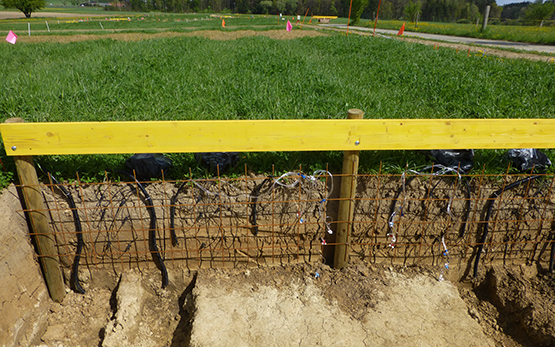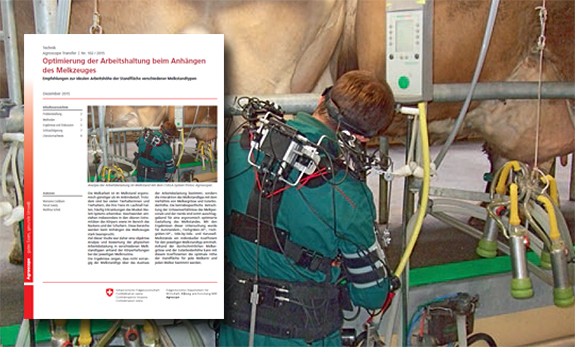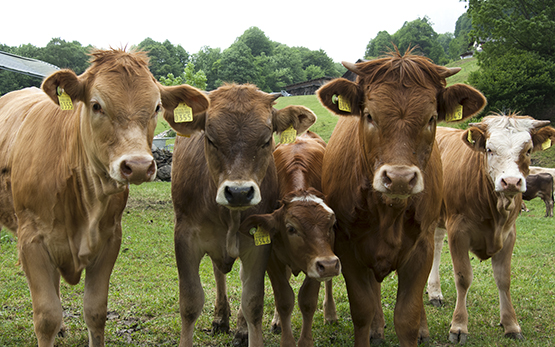Meyer M., Gazzarin C., Jan P., El Benni N.
Understanding the heterogeneity of Swiss alpine summer farms for tailored agricultural policies: A typology.
Mountain Research and Development, 44, (1), 2024, R10-R18.
Gazzarin C.
Auf Grasland Rindfleisch wirtschaftlich produzieren und dabei die Artenvielfalt fördern.
Montagna, 3, 2024, 24-25.
Schlebusch S., Hoop D., von Rohr P., Pausch H., Gazzarin C.
Enhancing culling decisions in Swiss dairy farming: Introducing a tool for improved replacement choices.
Smart Agricultural Technology, 8, 2024, 1-10.
Gazzarin C.
Bio-Weidebeef im Vergleich.
In: Silvestri Bio-Weiderind Produzententagung. 28. März, Brunegg. 2024, 1-33.
Gazzarin C., Bütler A.
Wie wirtschaftlich ist die Produktion von Bio-Rindfleisch?
Agrarforschung Schweiz, 15, 2024, 77-88.
Huber R., Cockburn M., Gazzarin C.
Wie wirtschaftlich ist die Pensionspferdehaltung?: Ergebnisse aus einer ETH Masterarbeit von Rafael Huber.
In: Strickhof Pensionspferdetag. 20. März, Wülflingen. 2024, 1-23.
Gazzarin C.
Wirtschaftliche und standortangepasste Mutterkuhhaltung: GrassBeef4Future.
In: Erfolg mit Mutterkuhhaltung. 7. März, Altdorf, Landwirtschaftsamt Kanton Uri. 2024, 1-40.
Gazzarin C.
Bio-Rindfleischproduktion im Vergleich: Was ist wirtschaftlicher und welches Fleisch schmeckt besser?
In: 25. Fleischrindersymposium. 25. Januar, Hrsg. Plantahof, Landquart (CH). 2024, 1-31.
Gazzarin C., Jan P.
Sustainable intensification of grass-based beef production systems in alpine regions: How to increase economic efficiency while preserving biodiversity?
Agricultural Systems, 214, 2024, 1-13.
Kozak O., Lavreniuk H., Gazzarin C.
Wenn der Krieg den Betrieb erfasst: Drei ukrainische Betriebsleiter erzählen.
BauernZeitung, 3, (113), 2024, 35.
Schlebusch S., Hoop D., Gazzarin C.
Einfluss des Produktionssystems und wirtschaftlicher Faktoren auf die optimale Nutzungsdauer.
In: 46. Agrarökonomie-Tagung. 21. November, Hrsg. Agroscope, Tänikon (CH). 2023, 1-20.
Gazzarin C., Spengler A.
Mehr als durchschnittlich: strategische Kreuzungszucht auf dem Vormarsch.
forum, 9, 2023, 6-9.
Kozak O., Gazzarin C.
Kühe melken, während die Bomben fallen.
UFA-Revue, 9, 2023, 68-71.
weitere Sprachen: französisch
Gazzarin C.
Wirtschaftlichkeit der Weidemast: Provisorische Ergebnisse im Rahmen des Projekts BioPerform.
In: Bio Suisse Fachgruppe Fleisch. 12. September, Olten. 2023.
Bütler A., Gazzarin C., Bravin E., Louw-Prevost M.
Kostenkatalog 2023: Richtwerte für die Kosten von Maschinen, Arbeit, Gebäude und Hoftechnik. Gültig bis September 2024.
Agroscope Transfer, 499, 2023, 1-60.
weitere Sprachen: französisch
Bütler A., Gazzarin C.
Rentabilität durch Effizienz ?: Die Kosten von moderner Landtechnik.
In: AgriEmotion 2023. 18. August, Hrsg. Agroscope, Tänikon. 2023, 1.
Meyer M., Gazzarin C., El Benni N., Jan P.
The structure of Swiss alpine summer farms: An old tradition through a new lens.
In: 33. Jahrestagung der Österreichischen Gesellschaft für Agrarökonomie. 27. September, Wien (AT). 2023.
Mariotte P., Grossiord C., Kay S., Manzocchi E., Aeby P., Ampuero S., Dubois S., Silacci P., Leifeld J., Jan P., Gazzarin C., Probo M.
Futterhecken in Dauergrünland zur Erzeugung von Zusatzfutter bei sommerlicher Trockenheit.
In: Generalversammlung des Vereins für die Entwicklung des Futtermittelanbaus. 10. Mai, Sorens. 2023.
weitere Sprachen: französisch | italienisch | englisch
Gazzarin C., Blättler T., Bütler A., Durgiai B., Schmid D.
Wirtschaftlichkeit der Bergmilch Produktion mit Original Simmentaler Kühen.
In: Frühjahrstagung 2023. 19. April, Hrsg. Schweizerische Vereinigung für Tierwissenschaften, Zollikofen. 2023, 1.
Kozak O., Jan P., Renner S., Gazzarin C.
Forschender Blick auf den Milchmarkt.
BauernZeitung, 27. Januar, 2023, 4-5.








